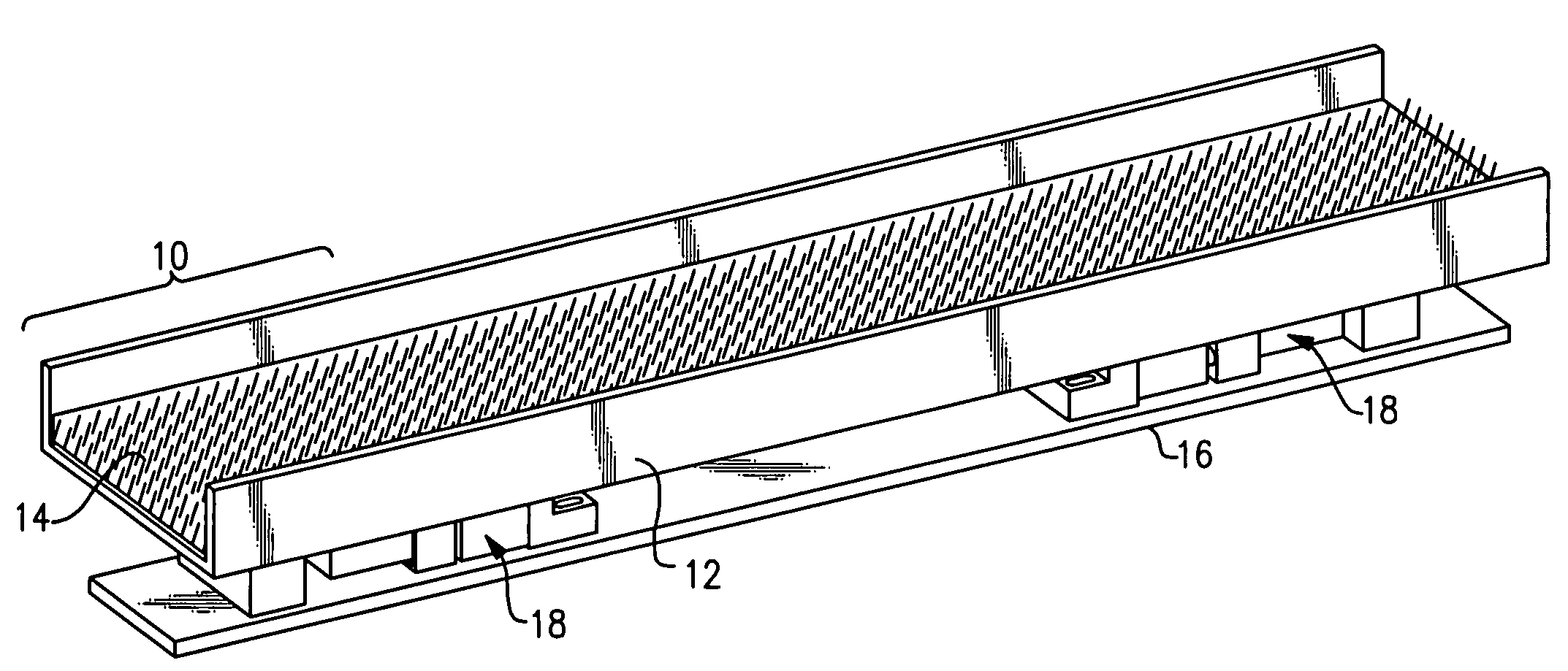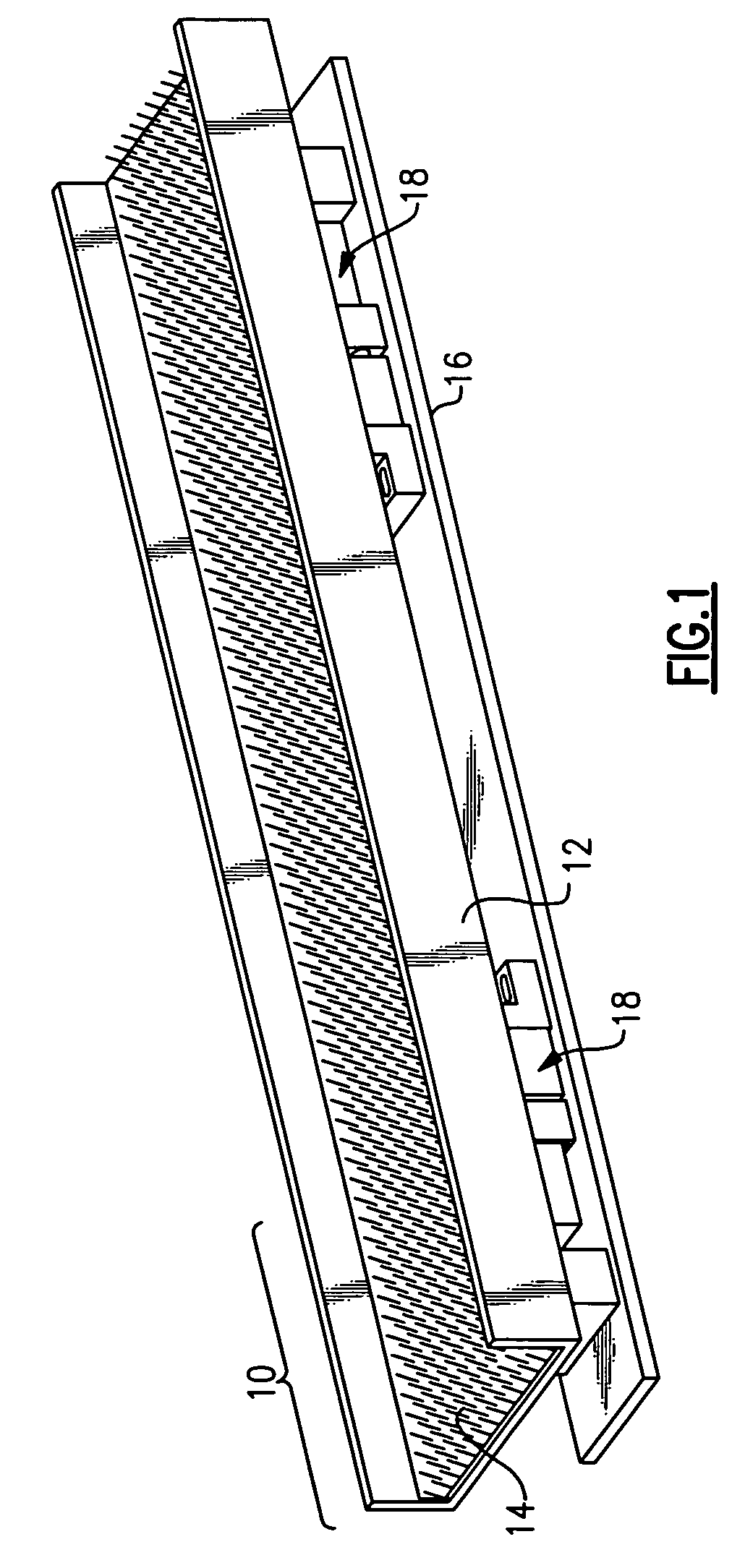Vibratory conveyor with non-biased oscillation
a conveyor and non-biased technology, applied in conveyors, conveyors, jigging conveyors, etc., can solve the problems of limiting the usefulness of tough durable workpiece handling, affecting the reliability of the floor space requirements, and the vibratory motors of these conveyors are unable to provide only back and forth motion or vibration, so as to achieve simple rheostat control, reduce the effect of floor space requirements and easy adjustment in force and frequency
- Summary
- Abstract
- Description
- Claims
- Application Information
AI Technical Summary
Benefits of technology
Problems solved by technology
Method used
Image
Examples
Embodiment Construction
)
[0029]With reference to the Drawing, and initially to FIG. 1, a linear vibratory conveyor 10 has a trough 12 containing a brushlike linear fabric material 14 which is conveying material that the parts are placed upon. A base plate 16 beneath the trough 12 is affixed onto a table, floor or other support, and a linear vibratory drive motor, or in this embodiment, a pair of drive motors 18, is mounted on the base plate 16, with the tray or trough 12 being supported on the drive motors 18.
[0030]The trough 12 oscillates longitudinally, that is, back and forth in its own plane, so that there is no significant component of vertical motion of the trough. Here the term “vertical” means in the direction normal to the plane of the trough, which can be inclined somewhat. The oscillation is uniform, and can be sinusoidal or harmonic, so that the only factor influencing the conveyance is the bias of the surface material 14. The conveying material 14 is biased so that it is smooth in one directio...
PUM
 Login to View More
Login to View More Abstract
Description
Claims
Application Information
 Login to View More
Login to View More - R&D
- Intellectual Property
- Life Sciences
- Materials
- Tech Scout
- Unparalleled Data Quality
- Higher Quality Content
- 60% Fewer Hallucinations
Browse by: Latest US Patents, China's latest patents, Technical Efficacy Thesaurus, Application Domain, Technology Topic, Popular Technical Reports.
© 2025 PatSnap. All rights reserved.Legal|Privacy policy|Modern Slavery Act Transparency Statement|Sitemap|About US| Contact US: help@patsnap.com



